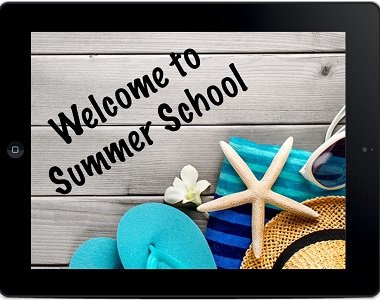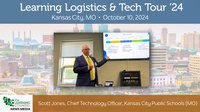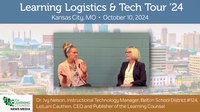As we head towards the end of the school year and preparations get underway for summer school programs, many teachers and administrators are asking two important questions: “How do we gain improved willingness and involvement from students who need to attend?” And, “How do we translate that into better assessment outcomes?”
One school who seems to have solved this dilemma and given us a model to look at is Morris School District. Their summer school program has a long history of success. Students may grumble, but last year every student who participated showed improvement in both math and English. But Morris students haven’t protested as vocally as one might expect, with school creeping into their hallowed summer break. Educators there have seen a bit of an anomaly over the years.
Their summer program is not only popular with students; it has been extremely effective as well. As Coordinator for Extended School Year Grades K-12, Chris Miller, shared the reasons for the program’s success, two key ingredients emerged from the Morris summer school preparations—great care and great data.
Over the summer the district offers its students Basic Skills Instruction (BSI), which is designed for specially selected students in grades three through five, focuses strictly on building capacity in language arts and math. For most schools, student mastery of Common Core State Standards (CCSS) is a top priority. The goal of the BSI program is to ensure students master CCSS skills by reinforcing what was learned in the grade they just finished. Administrators use data from the previous year to inform summer school teachers where each individual student is at allowing them to personalize each student’s learning experience. These students have been identified by predetermined benchmarks as kids who would benefit from additional support during the summer.
Strong Preparations Need Strong Data
Miller underscored the importance of carefully selecting the students who would benefit most from summer school, and Morris School District is conscientious about utilizing student data to make informed decisions. Teachers and administrators begin during the school year to identify students in order to best position each for summer success. Educators measure the number of times a student needs to be taught something before he or she achieves mastery. They also note any signs of regression, or the need to re-teach lessons that have been presented before. Each case is carefully evaluated by a board, which relies on these data points as well as teacher observation, attendance records, and learning targets so that the students who most need help receive it.
But data isn’t only useful during enrollment. One of the key procedures a school district can use to support its summer program, Miller said, is to provide summer school teachers with plenty of preparatory material. In Morris schools, summer school teachers are given student-learning profiles ahead of time, so the teacher can reach each student on their reading level. Developmental Reading Assessment (DRA) scores, math scores, and teacher notes from the school year are all part of the material teachers use to brief themselves on students’ strengths, their weaknesses, and learning style.
Optimizing Lessons
The structure of the day is arranged just as carefully. Alongside student data, Morris provides template lesson plans in advance that address writing objectives and improve reading, writing, and math scores. In class, writing units that support CCSS address next year’s pre-requisite skills at the students’ level. Math lessons focus on basic skills, math fact fluency, and foundational concepts for the next grade. Direct, individual instruction is the goal, but many schools find it is not quite practical. Morris has been experimenting with different programs, and found that blended learning works well to keep kids engaged in developmentally appropriate and beneficial projects.
One method the district has implemented with success is the use of literacy centers – individual or small-group workstations that allow students to explore the material independently. Even so, struggling learners are not always engaged. And when the lessons are individualized, it is difficult to collect information on every student in a personal way. Even the best teacher can’t track every lesson at once.
Last year, Miller and his team looked for ways technology could further enrich students’ summer school experience, and through thoughtful exploration and evaluation they chose to implement curriculum from Learning Upgrade.
This unique a set of lessons delivers CCSS-based concepts through music, song, games, and video while collecting individual student data in real time and letting teachers intervene when they are needed. Miller saw these lessons as a way to engage their students in ways they enjoy, keeping their attention and building their confidence, and they did just that, leading to a full implementation of the cloud-based curriculum in two of their elementary schools.
Individual Lessons, Individual Data
In a district that knows the importance of good data, a program like Learning Upgrade will make a big difference. And, indeed, it has. Miller’s teachers have combined these two resources to practice station rotation learning, in which students work individually or in small groups to review old skills or gain exposure to new ones through Learning Upgrade. The combination means that kids have continuous instruction throughout the school day. Most teachers of summer school agreed that Learning Upgrade and blended learning made for an effective pair. One wrote, “I’ve been teaching summer academy for 8 years, each and every year has been successful in its own right, however last summer was my best academy experience yet. Attendance was at an all-time high, and I truly enjoyed watching my students build confidence and succeed.”
Students engage in this targeted material, combined with direct individualized instruction, and practice a blend of foundations. The teacher rotates ability-based groups to target their level. Class size is kept low, eight to ten students each, and the Learning Upgrade platform allows teachers to flag students who may be struggling with a certain concept and provide them with 1-on-1 or small-group instruction.
Their careful planning and hard work comes through in the numbers. A large majority of students drastically increased in math proficiency, in all logging more than 560 hours on Learning Upgrade last year. Miller commented that all students benefited from their approach and that overall student engagement was extremely high. They look to replicate their success this coming summer as well.
Meanwhile, reactions from the families have been very positive. An overwhelming majority of parents agreed their child received the additional support they needed, appropriate instruction that engaged their child and that it was a great use of time.
So parents and teachers are on board, but the key to kids’ approval, Miller says, has been the incentive program. While the goal is to get kids excited about learning itself, sometimes extrinsic motivators can be a big help. Morris uses a reading log program and an attendance incentive–if the weekly objectives are met, students take home a prize on Thursday, the last school day of the week. Classrooms have a Treasure Chest prize for attendance, and there are morning meetings to get kids psyched.
Recognizing Achievement
The summer session is crowned with a program-long reward for top five readers and those with perfect attendance. The awards give students a sense of pride, as well. Miller shared a message he received from one of last year’s top five readers: “After our summer school program was out, I received from a student, thanking me for summer school because she was so proud of what she was able to accomplish. For an educator, it doesn’t get much better than that.” Incentive-based programs that get kids excited and motivated are terribly important because kids know their peers are outside. One very effective way to take away the sting is to make sure summer school is not the same as the rest of the year.
Mr. Miller shared Morris Schools’ comprehensive plan that ensures individualized instruction, small class sizes, engaging curriculum and various incentives as the recipe for their success. The ability-based grouping in small classrooms, blended learning, and rotation station model, all increase 1-on-1 time. Teachers have a leg up when they are provided with lesson plans up front, and can do even more when you support them by providing individualized data on each student. In summer classes teachers rely on their eyes, their ears, and the data from programs like Learning Upgrade, which provides deeper, individual student information to teachers automatically. Miller showed that when summer school is less like real school, with incentives, prizes, and a motivating atmosphere, kids feel that their summer is special, whether they spend it outside playing catch or inside brushing up on math.











